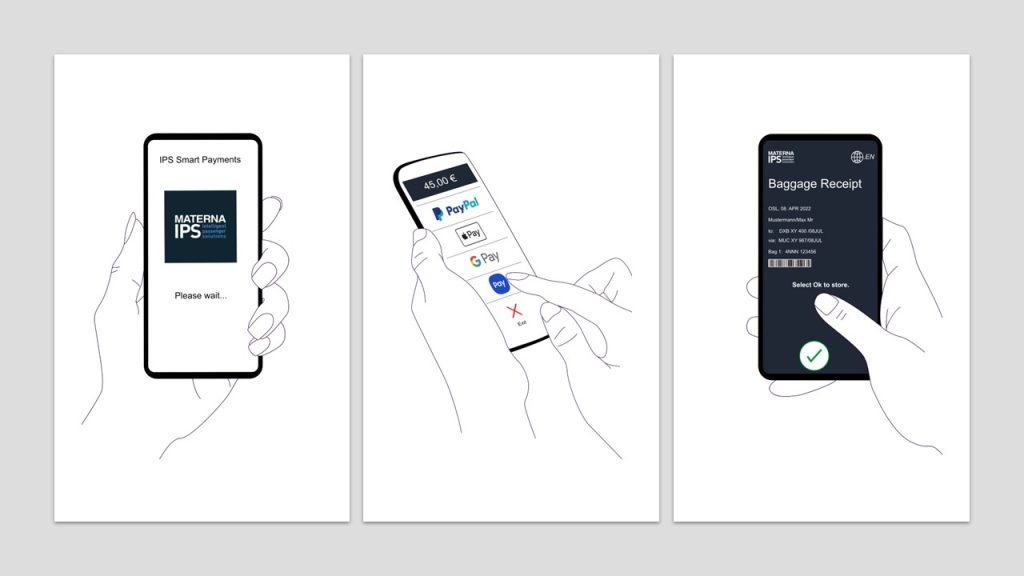Advanced digitalization has fundamentally changed the way we pay today. Whether at the checkout in the supermarket or in a restaurant, cashless payment methods with credit cards, smartphones, or smartwatches make spending money more convenient than ever before. One sector that has embraced these developments is the aviation industry.
Airports are more than just transit points today. With their duty-free shops and restaurants, they are now multifaceted retail and service centers that, as the starting point of the passenger journey, play a key role in the travel experience. Accordingly, airlines are always interested in making this experience as pleasant as possible for their passengers. To optimize passenger handling, smart payment is an interesting solution in this regard. Travelers can enjoy a more comfortable journey by simplifying the self-service check-in process and self-service baggage drop off.
Various payment solutions
Most airports and airlines now offer digital payment methods at self-service kiosks in addition to the classic payment of excess or additional baggage at physical counters with an employee. Accordingly, passengers no longer have to search for these counters in the airport, which can be quite unpleasant. Instead, digital payments allow paying directly at the check-in kiosk or the self bag drop (SBD).
Payment at self-service systems can be approached in two different ways: either with a Chip and PIN payment solution or with a software based solution.
The Chip and PIN payment solution is the most popular type, in which the self-service machines must be equipped with payment card readers, NFC readers, and keypads. Passengers pay at the kiosks using the chip integrated into their payment card and a PIN code. Once the payment process is completed, a payment processor (acquirer) transfers the money from the card to the airline’s merchant account.
However, this approach has a major disadvantage in the “Common Use” field because each airline normally uses a different acquirer for payment processing. For security reasons, the number of acquirers that can operate on a single payment device is usually limited to one. That means that airlines cannot share a single device. A shared check-in kiosk or self-bag drop would therefore require a separate payment device for each airline, ultimately leading to passenger confusion.
In contrast to Chip and PIN payments, software solutions like the QR-Code based approach offer a promising alternative.
QR-Code based Payments on the Rise
The smart payment solution does not require additional hardware for the check-in kiosk or SBD, as payment is not made via Credit Card and PIN code. Instead, after verifying their boarding pass and checking the size and weight of their luggage, the passenger scans a QR-Code with their mobile phone, which is shown on the display of the self-service machine. From this point on, the rest of the payment process takes place on the passenger’s mobile phone.
The QR-Code then redirects the traveler to a payment page where they can select their preferred payment service provider, such as but not limited to PayPal, Google Pay and Apple Pay. After successful payment, the passenger can complete their check-in or baggage drop and will receive a payment receipt.
This allows payment to be made using the traveler’s own device without the need to run an acquirer on the self-service kiosks. As a result, the facilities can be shared by several airlines.
The future of handling airport fees
Smart payment is a promising way to optimize the payment process at self-service check-in or baggage drop off systems at airports. The approach enables airlines to share single devices and passengers can be offered an improved travel experience. Thus, all parties involved benefit from this solution. – And that is why the expected increase in the use of QR-Code based payments at self-service machines is already happening.



